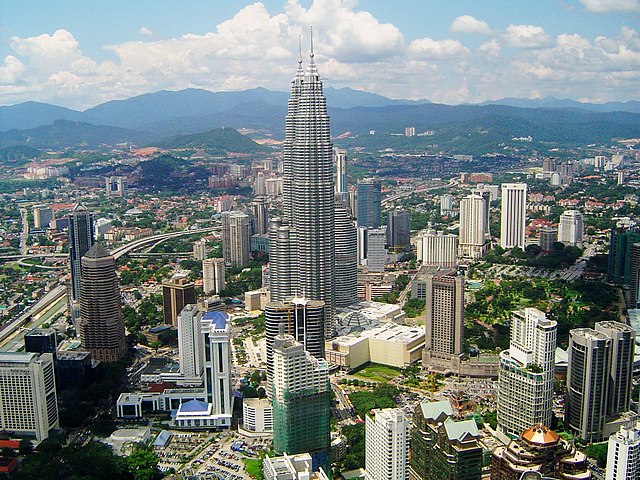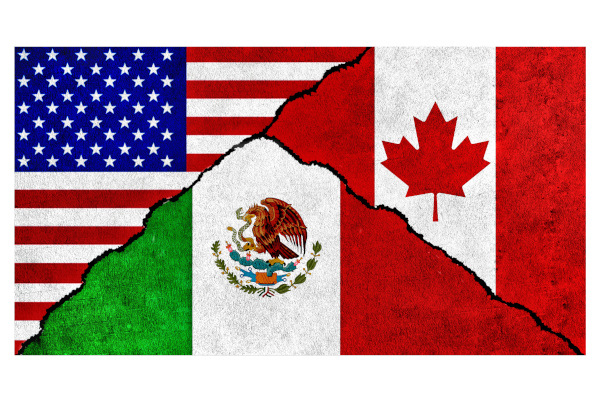Ask an Expert: The Benefits of Manufacturing in Malaysia
Supplyframe CMO and SaaS Sales Leader Richard Barnett discusses the economics of Southeast Asia and why Malaysia can be a key hub for business
As the U.S. and other countries start to move their manufacturing away from China, there's an opportunity for other countries in Southeast Asia to capture a piece of the market. We spoke with Richard Barnett, Chief Marketing Officer and SaaS Sales Leader at Supplyframe, to discuss Malaysia’s role in filling that gap and becoming a leader in the supply chain sector.
Why are you so bullish on Malaysia compared to other countries in Southeast Asia?
There are a few factors. Malaysia is viewed as geopolitically neutral on the whole. It's also a safer strategic location—there's less of a threat of natural disasters. But what's far more important is the relationship between the government and the ecosystem of suppliers and service providers that are specialized around that domain. Combine that with the years of foreign direct investment, which builds and expands those ecosystems in locations around the country. This makes it an attractive option.
Can you talk about the importance of semiconductor production for Malaysia's future?
With semiconductors, you have a cluster of service-training employees who are specialized in developing this specific product, and who are seen as an investment. Whereas final assembly or electrical component suppliers have more flexibility in their manufacturing locations. We've seen a movement back to final assembly locations being more localized in Eastern Europe but that's not going to happen with semiconductors.
How do Malaysia's government and its policies play a role in the country's growth?
It's important to note that the government has been very progressive in leading industrial policy around electronics. They invested very heavily in the market, signing the Memorandum of Cooperation on Semiconductor Supply Chain Resilience with the United States, for instance. They're viewed as a trusted partner in this expanded public-private partnership agreement. For instance, with something like the CHIPs Act in the United States, Malaysia benefits from these new investments.

You’ve been going to the Asian region for years. Can you compare your first visit to your most recent one?
I first went to Shenzhen in 1997 and it was a city of 250,000 people. Now there's 7 million people there. I remember IBM's first factory; they had a problem where they couldn't get the concrete to the right mix to support putting final assembly manufacturing lines on it, so they had to build everything on the second floor. The first floor was just dirt with tarps on it. You know, this was a high-tech assembly operation. Penang was more advanced because Dell and others had gone in and built out those plants but I always remember that IBM plant.
Looking forward, are there any other countries besides Malaysia that you think will have a bigger manufacturing presence over the next 10 years?
Vietnam comes to mind. We're also seeing a resurgence of growth and investment in Mexico, which is a longtime manufacturing base, and deep integration in automotive. I think what's interesting, but also uncertain, is where the next wave of growth will happen in Europe and Eastern Europe. There's a lot of resilience in the German manufacturing sector, which has been kind of amazing. Then there's local manufacturing in countries like Poland, Hungary, and Romania that have all gone through these waves of investment, then pull back, and then come back again. Estonia has always done well with electronics, as well. There's a lot of potential there.
Article Topics
Supplyframe News & Resources
Ask an Expert: The Benefits of Manufacturing in MalaysiaLatest in Supply Chain
Happy Returns Partners With Shein and Forever 21 to Simplify Returns Baltimore Opens 45-Foot Deep Channel Following Bridge Collapse El Paso Border Delays Cost Juarez $32 Million Per Day in Economic Losses Ranking the World’s 10 Biggest Supply Chains The Top 10 Risks Facing Supply Chain Professionals Walmart’s Latest Service: Ultra Late-Night Delivery Dollar Tree’s Oklahoma Distribution Center Decimated by Tornado More Supply Chain











